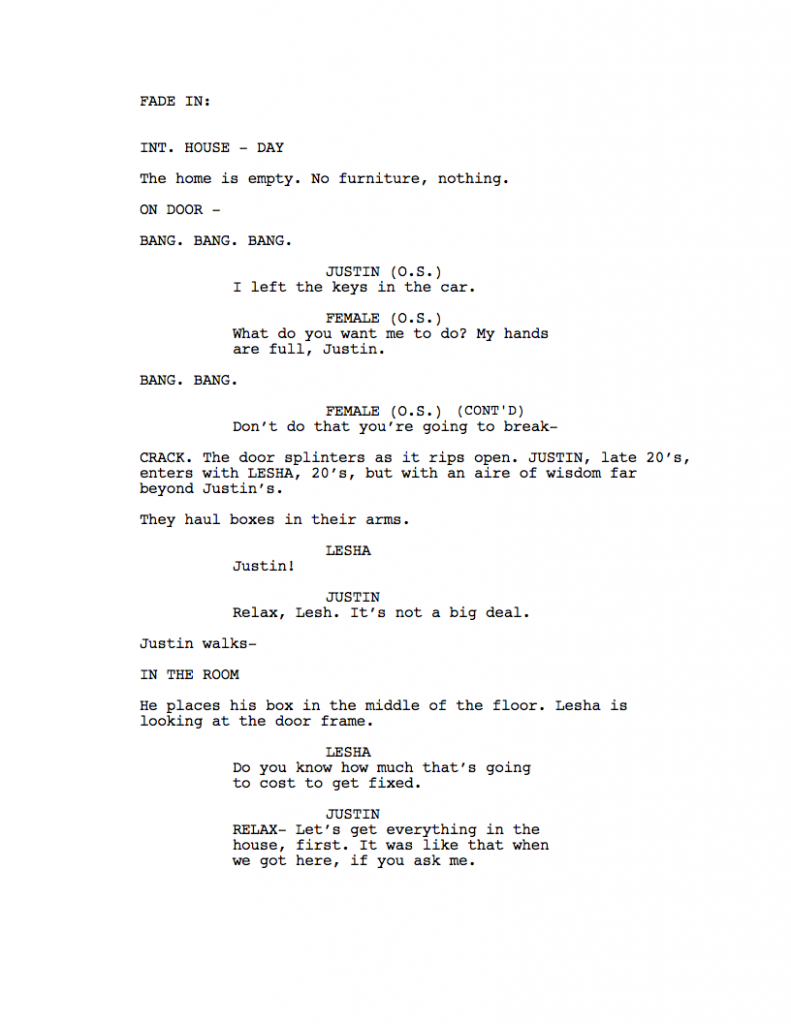There are a litany of concepts and ideas that will help you finish the first draft of your script. But this idea (writing a script through character action) will allow you to express your narrative by focusing on the actions of your character(s) when writing a script.
Ironically, you are not telling a story at all. You are manufacturing a story through the actions and decisions of your character.
At first glance, this concept may seem like a semantics . To some, it may conjure up negative feelings that contradict the adage of “story” being empirical are all other elements within the narrative. But, this is not the case.
What is meant by this idea is, simply put, when your characters do things in an effort to achieve a particular thing in their lives- a narrative results. This is done is by building scenes. This is where the concept of manufacturing a script comes from.
A compilation of great scenes, makes a great movie.
Instead of focusing on elemental hierarchy when writing a script, try to build your scenes. It’s easier than you think. Every scene in your script needs to help your character achieve their goal. Yet, this is not all that is required. If it were, you’d have a tutorial- not a movie.
You have to add elements that prevent your character from achieving that goal, to create drama.
EXAMPLE: Let’s write a scene where a character enters a home.

In this example, we can clearly see who the characters are by the nature of how the conduct basic actions. There’s load of character information crammed in this one page, and I did not need to write a lofty character description to do this.
In life, we judge characters by their actions. Writing a script is no different.
We can see how giving your character(s) simple action, and allowing their personalities to dictate the way they conduct these actions form the basis of motivation, conflict and drama.
Simply put, a writing a script should be a compilation of scenes (22-26 scenes under normal conditions) that express an idea or thought (theme). Lev Kuleshov is credited for the conceptualization of a mental phenomenon by which viewers derive more meaning from the interaction of two sequential shots than from a single shot in isolation.
Alfred Hitchcock has dubbed this “pure cinema”. You can add this to your writing by having complete control of what your characters are doing throughout the scene.
This leads to the conclusion that; writing a script is a montage of character actions which relate to a centralized and focused idea. It is necessary to pay particular attention to how you construct your scenes. Ask, ‘what are your characters doing in them in the first place?’ After you visualize the actions they need to make to keep the scene moving the scene forward, it is a process of rinse and repeat.
How does writing like this apply to making compelling movies?
Let’s say, I want to make a move about going to the store to indulge in a tub of ice cream. Let’s follow the progression of the movie, by examining the basic action necessary to get ice cream.
Do have comments or ideas that question, expand or critique this idea, join the conversation here. We have more content which will help you think about your writing as a sustainable art form. Lastly, if you have a finished script, we offer feedback. Please take advantage of this product.

Pronto: Script Coverage (Feature)
Receive feedback/coverage for your FEATURE LENGTH screenplay. The Film Club of America is offering this service to our members so that you can have confidence in your writing. Feedback normally takes 3-5 days. Price is charge per screenplay uploaded, so be careful multiple reads of the same story can get expensive. Buy completing purchase you will agree to the terms of this service.

